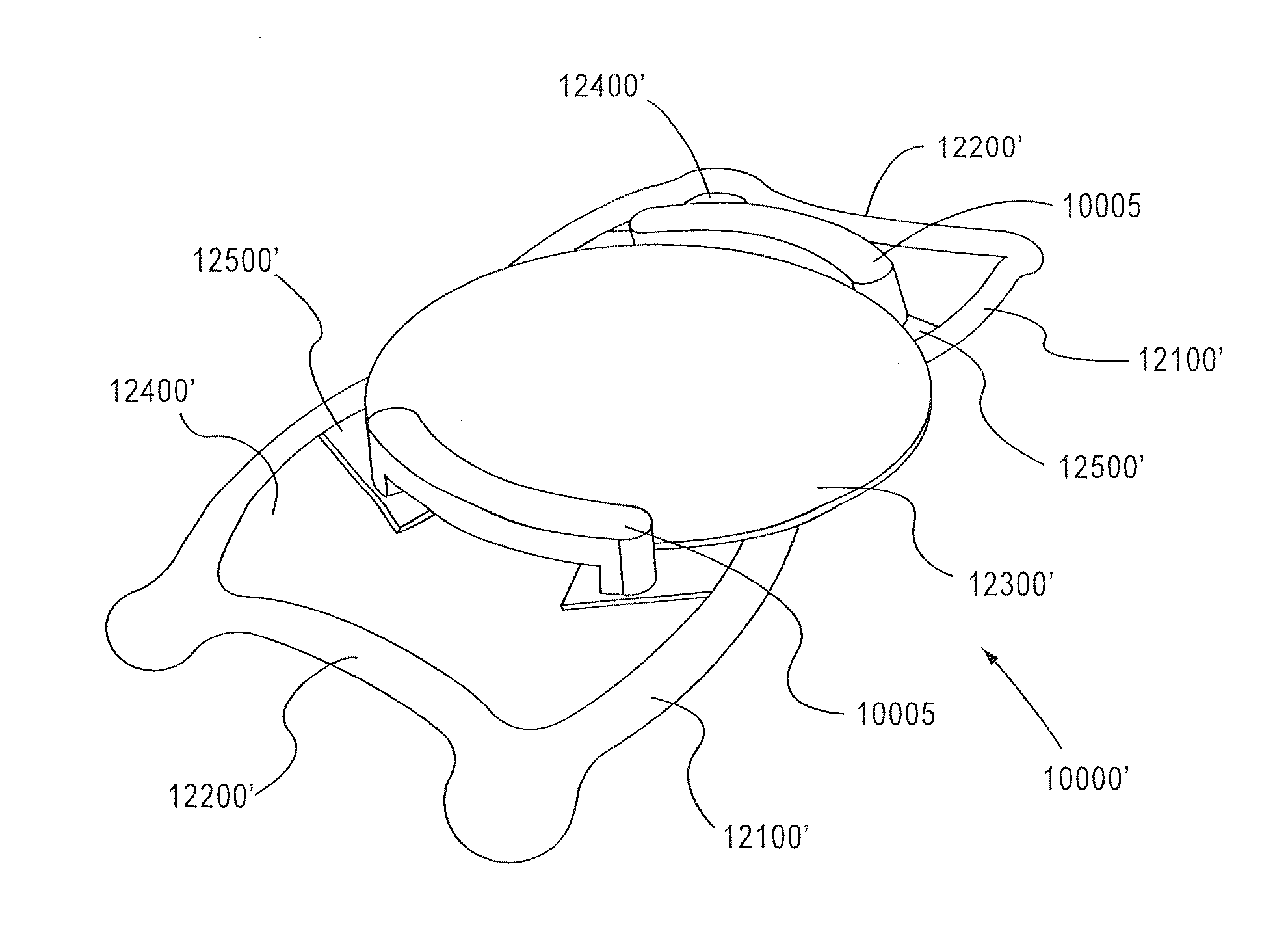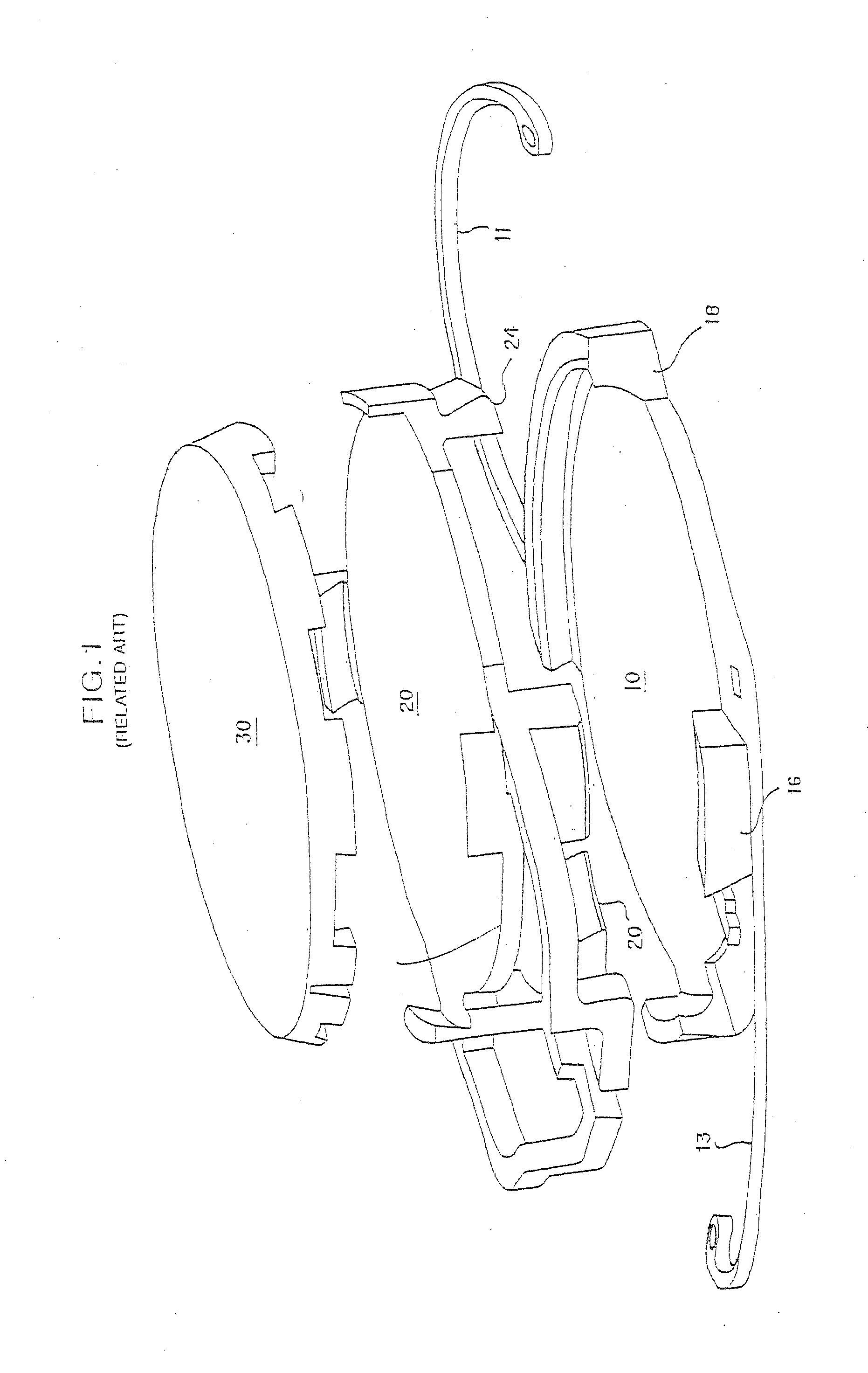Current procedures and methods used by refractive surgeons may not satisfy the total refractive needs of the patient.
Particularly, the most commonly performed refractive
surgical procedures, such as, for example, cataract extraction with intraocular lens implantation, in addition to the most recently popularized corneal refractive
surgical procedures, such as eximer
laser photoblation, exhibit limitations.
One reason for the limitations is the lack of post-operative refractive accuracy.
The lack of post-operative refractive accuracy renders the commonly known refractive
surgical procedures uncompetitive with currently available non-surgical alternatives for patients, for example, glasses and contact lenses.
Difficulties arise in treating
presbyopia because typically once a person manifests symptoms of
presbyopia, the symptoms worsen as the person ages.
Conventional techniques for replacing an intraocular lens each time the patient's vision deteriorates do not always present a practical or cost-effective approach.
Patients suffering from eye trauma or other eye afflictions may have the iris or other portions of the eye distorted, destroyed, or discolored.
Such
visualization, although not outside the scope of a surgeon skilled in the art, increases the degree of difficulty of the procedure, thus increasing the chance that a surgical error or other problem will arise in the surgical procedure, leading to unwanted complications.
Furthermore, analyses of current corneal refractive technologies indicate the presence of a significant amount of preexisting or naturally occurring post-operative, as well as preoperative, image
distortion (
optical aberration) or degradation, particularly under low light conditions, such as when driving at night.
Due to the practical limits of performing
intraocular surgery, as well as the biological and physical behavior of the
human eye during and after various types of
intraocular surgery,
predictability at the + / −0.25 D accuracy level with a single surgical procedure is difficult to achieve as a practical matter.
Furthermore, factors such as biometry errors, variable
wound healing, and capsular contraction around the
intraocular lenses contribute to decreasing the likelihood of achieving the desired refractive accuracy.
The engulfment typically makes the removal of the lenses and their haptics more difficult.
Exchange of iris fixated anterior chamber lenses does not typically guarantee precise position or orientation.
However, the surgical
implantation procedure itself may create additional optical aberrations which cannot be anticipated preoperatively and thus the primary
lens implant cannot account for these optical aberrations.
However, the design of current
intraocular lenses typically makes such a procedure difficult and impractical.
Furthermore, after a period of time with normal healing, it becomes physically dangerous and / or nearly impossible for the patient to have the implanted lens removed once the eye tissue takes hold on the capsular fixation holes of the lens.
Therefore, such an argument is not realistic, practical, or safe.
A
single component intraocular lens, which in general is not designed to be removed and with only two optical surfaces, cannot accurately allow for compensation of sphere, cylinder, cylindrical axis, and all forms of optical aberrations that may be discovered after the initial implantation.
The easy exchangeability of optical elements is critical because the actual
surgery of implanting the lens in the first place, as well as variances in the manner in which the eye heals after implantation, potentially create distortions which may not stabilize for several months after the operation.
Therefore, the ability to measure and to compensate for the
distortion(s) optimally takes place several months after
surgery and cannot typically be predicted prior thereto.
Since the same
surgical wound is used for both the primary and secondary operations, additional
distortion due to
wound healing would not be anticipated as a result of the second operation.
From an optical standpoint, any time incisions are made to the
cornea, the
cornea loses some of its natural globularity due to imperfections caused by the incisions and the
resultant trauma.
The imperfections in the
cornea lead to induced
astigmatism, or optical aberrations caused by irregularities in the shape of the cornea.
The “
cellophane wrapping” makes it extremely difficult and dangerous for the surgeon to
gain access to any surface of the base lens 100 (1000, FIG. 24) after the primary
surgery heals, which is necessary for enhancement operations.
 Login to View More
Login to View More  Login to View More
Login to View More 


